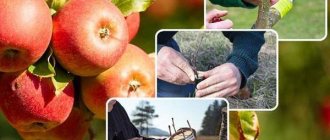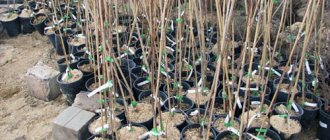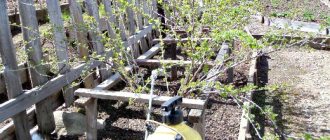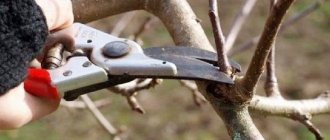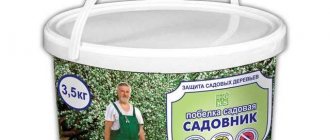With the onset of spring, the awakening of trees and shrubs in the garden begins.
Plants are starting a new season. There are several tricks to help them “wake up” and protect them from parasites and diseases. We will talk about one of these agricultural techniques in this article. Dear readers! For you, we have created communities on social networks in which useful articles and interesting ideas are published several times a day! Subscribe and receive useful content in a convenient format!
Why pour boiling water over currants?
During the winter, insect pests and spores of pathogenic fungi seek shelter. One of the most favorite plants for parasites is currants. On this shrub, bud mite larvae, aphids, and various fungi (most often powdery mildew spores) are waiting for the onset of warm weather.
If you spill boiling water on currants, the egg clutches, larvae and spores will die from the high temperature.
ON A NOTE. Dousing with hot water is essential for plants that are already infected. Mites and aphids reproduce very quickly. If you don’t fight them, they will eat all the greens and you will be left without a berry harvest.
Another reason to process currants with boiling water is as follows. During the summer season, currants have to be treated several times with chemicals to stimulate growth and fruit formation, prevent and protect against pests and diseases.
Even if the permissible concentration of active drugs is observed, a certain amount of toxins will accumulate in the plant over the course of a whole year. Treatment with very hot water allows the plant to release chemical elements.
The third reason to carry out the treatment is hardening off the bushes. Treated currants become more resistant to adverse environmental conditions, pests and diseases.
Pros and cons of processing
Dousing currant bushes with boiling water has many supporters. This method has significant advantages. However, this method is not universal and has its drawbacks.
| pros | Minuses |
|
|
When to pour boiling water over currants in spring?
There is no exact date for the procedure. Every year, based on the weather and the condition of the bushes, summer residents again choose the day to treat currants with boiling water.
The procedure is carried out when the snow has already begun to melt, but the plant has not yet woken up and sap flow has not begun.
IMPORTANT! If the kidneys begin to swell, then it is too late to carry out the procedure!
In cold weather, pouring boiling water over the plant is also not advisable. You need to wait for 5-10 degrees Celsius.
The approximate time frames for Russian regions are as follows:
- Southern and Southwestern regions - the first half of March;
- Central Russia - starting from the second decade of March;
- Moscow and Moscow region - starting from the second decade of March;
- Ural, Siberia, Northwestern Russia - first half of April;
- North - starting from the second ten days of April.
NOTE! This is an approximate time frame for the work. You need to focus on the weather and air temperature. In warm years, start the procedure earlier. If winter is delayed, take your time and wait for warmer weather.
Timing and features of the procedure
For each region, processing time is selected individually; it may be different every year. Currant bushes should be scalded with hot water at the moment when the snow has already begun to melt and sap flow has not yet intensified.
Attention ! The procedure is carried out before the leaves appear, the buds open and the plant begins to bloom.
It is necessary to wait until the air temperature rises to 10°C. After treating the branches with hot water, it will fall directly on the hiding parasites, and they will die. When to pour boiling water over currants in the spring in 2022 by region is indicated in the table.
| Region | date |
| Moscow region | March 7-16 |
| Central regions | March 8-17 |
| Northern regions | April 11-23 |
| Western and Eastern Siberia | April 1-14 |
| Southern regions | March 1-17 |
In the Moscow region, the procedure begins in early spring; in the Urals and Siberia, the dates are shifted to a later time. They mainly focus on the presence of snow and the formation of buds, because the climate tends to change. In addition, treatment with boiling water is also carried out in the fall. In this case, the goal is to disinfect the soil; thanks to the procedure, fungal spores stop reproducing.
In autumn, the currants are scalded before they begin to dry out, and almost all the greenery flies off the bushes. It must be borne in mind that treatment in the fall will not bring any results in the fight against ticks. The fact is that with the onset of winter, the buds are covered with a crust, and insect pests are under reliable protection. Hot water will not penetrate through stiff buds.
Before work, you need to make a clear plan of which bushes will be doused. If there is no clear action plan, then due to the fact that the boiling water cools down, the positive effect will begin to decline. Those currant bushes whose root system is too close to the surface of the earth, it is advisable to additionally protect it with some kind of material. You can take boards, sheets of iron, plywood and others.
How to properly pour boiling water over currants step by step
Step 1. First of all, you need to prepare. You will need a metal watering can or a kettle with a sprinkler and gloves to avoid burning your hands.
Step 2. We first tie the currant bushes so that all the branches are in one pile. This way there is less chance of missing a branch.
Step 3. Cover the roots if they are near the surface.
Step 4. We pick off the unnaturally large buds of the currants. They are called tick-borne because insects hibernate in them.
Step 5. Boil water, pour it into a watering can and let it cool a little. A comfortable temperature is considered to be between 60 and 80 degrees. There is no need to water the plants with boiling water. Let the water cool slightly.
Step 6. Quickly scald the bush with a watering can, trying to get on every branch.
ON A NOTE. Boiling water consumption is 1 bucket for 2-3 bushes, depending on their size.
Is it possible to carry out the procedure in summer?
In summer, currant bushes are in the phase of active growth, flowering and fruiting. During this period of time, it is impossible to treat with boiling water, since you are more likely to harm the plant than to destroy the pests.
In the summer, insecticides are used to control pests, as well as folk remedies that rid plants of pests. But they are all diluted in warm water, and not in boiling water.
Treat with boiling water in the fall, before leaf fall. That is, you need to scald the bushes before they go into hibernation. The fact is that during the winter the currants become woody, and the buds become covered with a kind of crust. As a result, pests that hide in the kidneys do not suffer from boiling water.
Why do you need to heat treat currants?
This is an affordable and effective way to neutralize the bud mite, which is the most common pest of currants.
Using boiling water has a number of other advantages, such as:
- warming up the soil;
- increasing plant resistance to adverse external factors;
- increase in yield.
The advantage of this method is its speed, that is, the pests die already during scalding. No less importance is attached to treatment with boiling water when fighting fungal diseases.
Processing currants in the spring with boiling water serves as a kind of hardening, after which the following is formed:
- stronger immunity to pests;
- disease tolerance increases;
- appearance and taste improves.
Features of scalding bushes
The procedure must be carried out quickly. Your task is to scald the bush, and not to wash it in boiling water.
The water should not be exactly 100 degrees. Cool it a little. 80 degrees is the optimal temperature for processing. Cooling below 60 degrees is also pointless. Such watering will not give any effect.
Another important detail that many people miss. Often, currants, especially old bushes, have roots close to the surface or even visible above the ground. They must be protected from direct exposure to boiling water. Cover the roots with film, boards or iron to avoid burning them.
ON A NOTE. Do not use plastic utensils. Due to boiling water, it will become deformed, and toxic plastic compounds will get into the water.
What other pest control methods are there?
The effectiveness of the method can be enhanced. There are several tricks that will help make processing even more effective.
How to use hot water and potassium permanganate solution
Potassium permanganate is an old and proven remedy in the fight against fungi and bacteria. A light pink potassium permanganate solution will kill more pathogens.
Please note that potassium permanganate must be added AFTER the water has boiled.
How to use a steam cleaner
The optimal temperature of steam should be the same as that of water – 60 – 80 degrees. You can even do it a little hotter, but then you will have to spray from a greater distance.
The disadvantage of the method is quite obvious. You need a steam generator and electricity.
Although there is a slightly more difficult method. You will need oilcloth and a bucket of boiling water. We make a cone from oilcloth and close the bush. We put a bucket of boiling water inside the cone and close the entire structure like a tent.
How to make a solution with urea
The best way to increase the effectiveness of boiling water treatment is to add urea and copper sulfate. A bucket needs 0.5 kg of urea and 0.05 kg of copper sulfate.
These drugs will not only harm pests and diseases, but also saturate the plant with nitrogen, which stimulates the formation of green mass and slightly delays the flowering of currants.
ON A NOTE. The urea needs to be stirred well so that there is no sediment or lumps. The water temperature should be a little colder - 60 - 70 degrees.
How to water correctly and at what temperature
The shoots should be processed before the juice begins to flow and the buds swell. In currants, these vegetative processes begin early, already in April. Therefore, hot watering needs to be done even earlier . Experienced gardeners advise carrying out this procedure in early spring, when the last snow is still lying or immediately after it melts. In the fall, when the plants have shed all their leaves, you can also kill aphids and fungi with boiling water. But it will not be possible to defeat the tick, because at this time it is no longer accessible in the tightly closed bud.
Watering from a bucket is not suitable for this purpose, because the water consumption is high and the efficiency is low. The best way is spraying from a watering can with a diffuser . In this way, you can control the distribution of liquid over the entire surface of the shoots. In this case, the water temperature should not be lower than +60°C and not higher than +80°C. In this regard, it is necessary to use a watering can made of a material that does not deform under the influence of such high temperatures, for example, metal.
Did you know? It is believed that boiling water, i.e. water heated to +100°C, kills most microorganisms. But it turns out that at the bottom of the Atlantic Ocean there lives one type of bacteria that is comfortable at +400°C. Water of exactly this temperature is emitted by underwater geysers in that place in the Gulf of California.
Before you start watering, you need to prepare, i.e. inspect the bushes and remove excessively large (mite) buds. Hot water will also get into them. But removal is guaranteed to prevent the spread of pests. It is also advisable to collect the branches into one sheaf and tie them with a rope. This will make spraying easier. Water consumption - 10 liters for 2-3 plants.
Hot watering process technology:
- Boil water.
- Pour into a watering can. While the water hits the bed, it will cool to the desired temperature.
- Thoroughly spray each shoot on the bushes with hot water, treating one area for no longer than 5 seconds. In this case, you should maintain a sufficient distance from the watering can nozzle to the shoots - 10 cm.
- You can also water the ground around the bush to disinfect it. If roots are peeking out of the ground, they need to be covered with any available material so that they do not get burned.
Video: watering currants with boiling water
The effect of heat treatment will be even better if you add simple disinfectants to boiling water:
- salt: 5 g per bucket of water (10 l);
- potassium permanganate: 0.1 g per bucket (light pink solution);
- copper sulfate: 3 g per bucket of boiling water.
Important! You cannot scald the shoots a second time, even if branches were missed. A repeated procedure will destroy the kidneys.
Common mistakes
- The most common and serious mistake that gardeners make is treating it with boiling water when the buds have begun to bloom on the plant. Yes, in this case, you will destroy the pests, but you will also harm the plant.
- Treatment with boiling water. The water must cool slightly, otherwise you will injure the currants.
- Treatment with warm, not hot water. Water colder than 60 degrees will not do any good.
- The roots were not covered. The roots are the most important part of the plant and must be protected. Therefore, when processing currants with boiling water, you need to spread an oilcloth under the bushes.
- The plant is exposed to very hot water for too long. The whole procedure should take no more than 5-10 seconds. There is no need to use boiling water longer. That is why, before watering, preparation is carried out, during which the branches are collected in one bunch.
- Not all shoots have been processed. If you haven’t doused some branches, the effectiveness of the procedure is reduced. An untreated shoot becomes a source of infection.
Answers to frequently asked questions
Why carry out the procedure?
Watering with boiling water helps fight pests and fungi, improves the plant's immunity, helps it remove toxins and awakens currants from hibernation.
What to add to boiling water to increase the effectiveness of the method?
Dilute urea and copper sulfate (Bordeaux) in hot water. These drugs will increase the percentage of destroyed pests and pathogenic microorganisms, and also saturate the currants with nitrogen.
What temperature should the water be?
Optimal is 80 degrees. There is no need to work with boiling water, and do not forget to cover the roots of the plant.
Do you need to process all the currants?
Practically. Do not scald very young bushes, as well as those where the buds are already swelling.
When else to carry out the procedure?
You can carry out scalding in the fall, after the end of the gardening season, but before the moment when the currants become woody.
What are the alternatives to dousing with boiling water?
One alternative method is steam treatment. You can use a steam generator, or you can hide a currant bush in a tent made of plastic film and put a bucket of boiling water inside.


